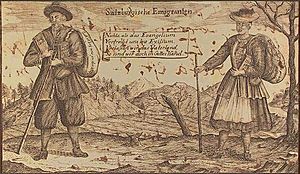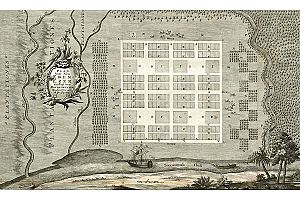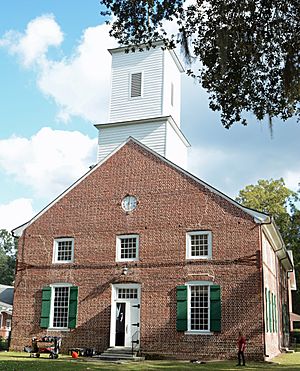Salzburger emigrants facts for kids
The Salzburger Emigrants were a group of German-speaking Protestant families. They came from the Archbishopric of Salzburg, which is now part of Austria. In 1734, they moved to the Georgia Colony in America. They left their homes because they were Protestants, and the ruler of Salzburg, Count Leopold Anton von Firmian, who was a Catholic Prince-Archbishop, wanted them to change their faith. On October 31, 1731, he ordered them to leave. A leader named Pastor Samuel Urlsperger asked King George II of Great Britain for help. The King, who was Lutheran, offered them a safe place in his new Georgia colony. This place later became the town of Ebenezer.
Contents
Journey to Georgia
In 1734, about 300 Salzburgers began their long journey. They were led by Johann Martin Boltzius and Israel Gronau. They sailed from England and first arrived in Charleston, South Carolina on March 7. A few days later, on March 12, they reached Savannah. James Oglethorpe, who started the Georgia colony, met them. He gave them land to build their new home, which they named Ebenezer.
Challenges in Ebenezer
The Salzburgers faced many problems when they first tried to build their community. More than 30 settlers became sick and died from a disease called dysentery. Many babies also died soon after they were born. Their first settlement was too far from rivers, which made it hard to get around. The land there was also not good for farming.
The Salzburgers needed to move to a better place. Their leader, Johann Martin Boltzius, knew they would not succeed if they stayed there. They received money and help from the Trustees, who managed the Georgia colony, until they could find a new spot.
Building New Ebenezer
In 1736, after talking a lot with Oglethorpe, Boltzius was able to get a new place for the community. The Salzburgers moved to a spot above the Savannah River. This new settlement was called New Ebenezer. By the end of 1737, they had built good farms.
In the next few years, they built a grist mill that used water power. This mill helped them grind grain into flour. The Trustees continued to support them, which was a big part of their success. Even though many people still died, the Salzburgers started to do well. They changed how they made money. Instead of just farming for themselves, they started producing silk and timber (wood). These jobs needed a lot of workers. To help their farms grow even more, the leaders decided to bring in enslaved people, even though they had been against it at first.
The Salzburgers became very good at farming, especially raising cattle. Their grist and sawmills also helped them earn money by making products and trading them.
Community Growth and Legacy
By the mid-1700s, the Salzburger community grew much larger. New settlements started to form, and the population reached over 1,200 people. After Boltzius died in 1765, the special identity and traditions of the Salzburgers slowly began to fade.
Today, the Jerusalem Church is one of the few things left from the Salzburgers. The church was finished in 1769. It is the oldest church building in Georgia that is still used today. In 1966, the Salzburg Archbishop Andreas Rohracher said he was sorry about the expulsions that happened so long ago.




